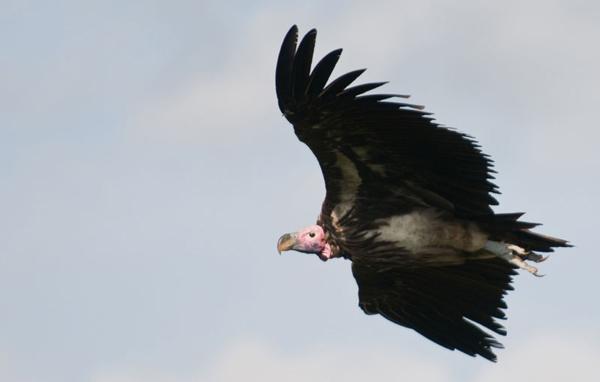How Do Vultures Find Dead Stuff?

Turkey vultures, often called buzzards, are found throughout much of the United States and Central and South America. They can often be seen circling endlessly and effortlessly, and are fairly easy to identify by their huge wingspans and striking heads.
"They're often mistaken for eagles because of their huge 6-foot wingspan and flight patterns," explained Paul Wolterbeek, a volunteer program coordinator at the Boyce Thompson Arboretum in Arizona, where as many as 300 of the birds have been counted in late summer before their annual migration south.
Turkey vultures are much different from eagles. Their bills and feet are not designed to catch or kill prey," so instead they feast on road kill and desert casualties," Wolterbeek said.
These creatures are most easily identified by their red heads, which are entirely bald and free of feathers. This makes it safer to feast on totally gross carrion — stuff doesn't stick. "The birds are designed to poke their bills deep into a carcass," Wolterbeek said, "and smooth skin cleans a lot more easily than would absorbent feathers."
"The vultures find those columns, and ride the updrafts hundreds of feet upwards," Wolterbeek explained. "They've been known to cruise 30-50 miles away in search of food." When one finds a good updraft, other turkey vultures will join it. A group of turkey vultures is called a "kettle," Wolterbeek said, because when several converge and circle together "they can resemble water swirling in a pot."
It's a myth, Woterbeek said, that vultures prefer things that have been dead for days. "The truth is that they prefer their meals more fresh ... they'll definitely pass up carrion that's too, well, 'ripe.'"
So how do vultures find fresh road kill? It's not with eagle eyes. Surprisingly, though most birds lack any sense of smell , vultures can sniff out a dead critter from more than a mile away.
Get the world’s most fascinating discoveries delivered straight to your inbox.
"They smell the unique sulphurous chemical compounds of decaying meat from high in the sky, then will circle around downwards until they find the aroma's origin," Woterbeek said.
Follow Life's Little Mysteries on Twitter @llmysteries. We're also on Facebook & Google+.
Robert is an independent health and science journalist and writer based in Phoenix, Arizona. He is a former editor-in-chief of Live Science with over 20 years of experience as a reporter and editor. He has worked on websites such as Space.com and Tom's Guide, and is a contributor on Medium, covering how we age and how to optimize the mind and body through time. He has a journalism degree from Humboldt State University in California.



